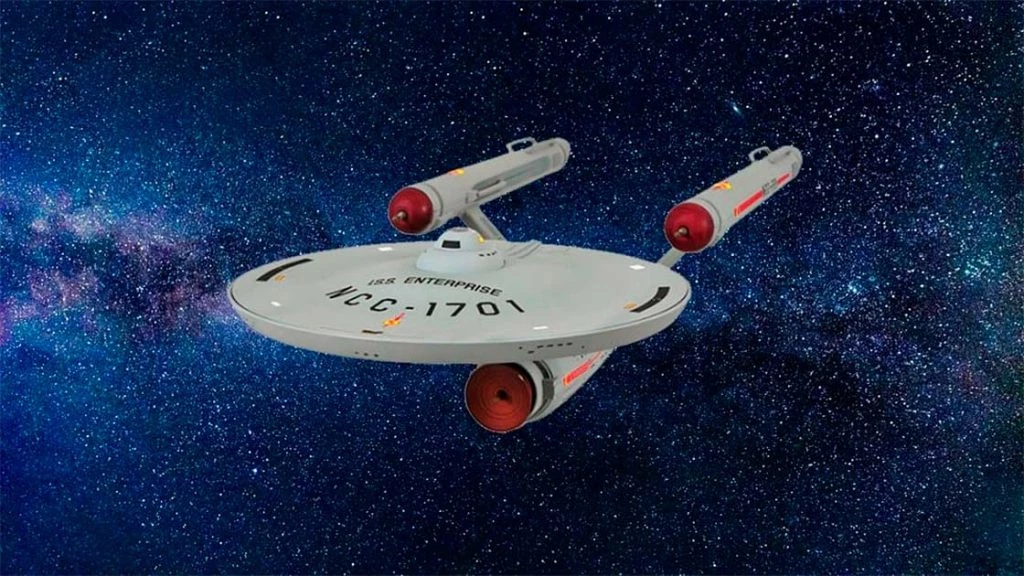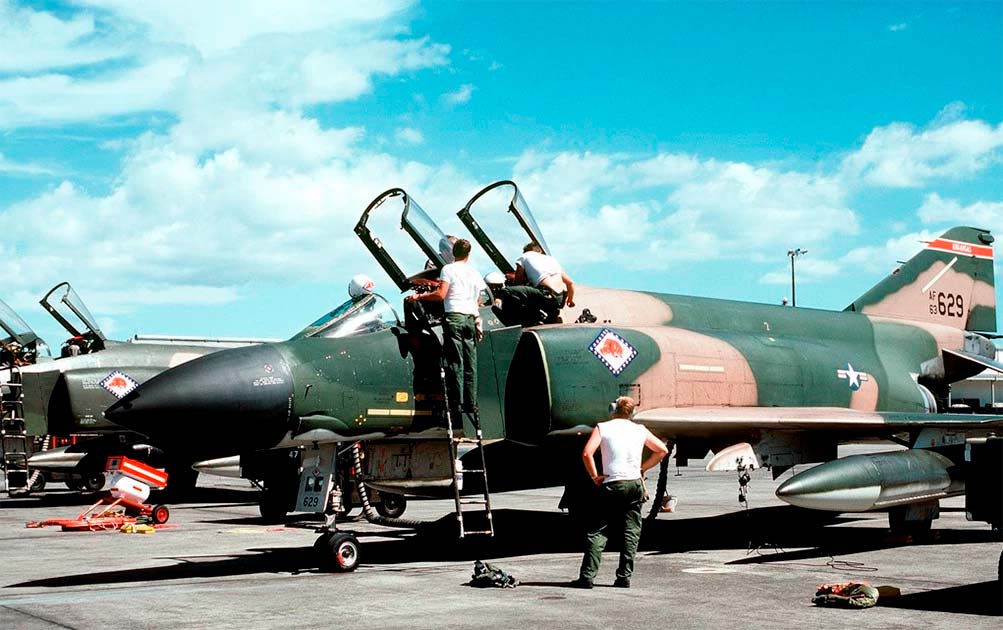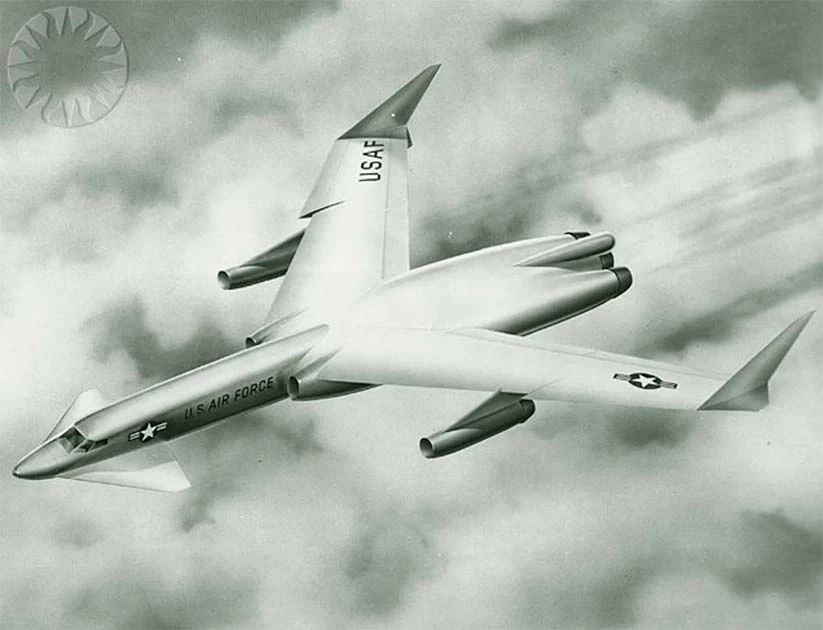In the late 1950s and 1960s, the aviation industry was obsessed with developing supersonic transport (SST) aircraft, promising a future of ultra-fast international travel. The Lockheed Corporation was among the major players in this game, and the CL-1201 was their answer to the US government’s call for a supersonic transport aircraft.
Most would expect supersonic planes to be small, but Lockheed took things in an entirely new direction. The CL-1201 remains the largest aircraft ever designed, and for those of a sci-fi bent a good comparison would be the USS Enterprise of 1960s Star Trek. The CL-1201 was much bigger than Kirk’s spaceship, and was nothing less than a marvel of engineering.
It was an exciting design but many consider it to have been doomed from the very beginning. What made this design so special and why did it never leave the drawing board?
What was the Lockheed CL-1201?
The Lockheed CL-1201 was a technological pipe dream. It was a proposed supersonic transport (SST) aircraft that the Lockheed Corporation began researching during the 1960s. The design was based on the company’s earlier L-2000 SST concept that had been developed in response to a request from the United States government.
The plane was absolutely huge, with a wingspan of 1,120 feet (340m), more than twice that of any aircraft even today. It would have been powered by four General Electric GE4/J5P turbojet engines which would have provided a total thrust of over 100,000 pounds (75,000 NM). The idea was that this would have allowed the behemoth to reach speeds of up to Mach 3.2, over three times the speed of sound.
The plane would have also had VTOL capabilities, similar to that of the British Harrier jump jet because if you’re going for blue sky thinking why not at this point. Getting such a massive plane off the ground would have been a nightmare, so the plane was designed to have no fewer than 182 separate vertical lift engines, allowing it to take off vertically.

How did they plan on powering such a beast? Well, this was the 60s, so the answer, of course, is nuclear power. The engines would have received their power from the heat generated by a nuclear reactor. The heat would have been transferred to the jets where it would superheat the air passing through them to create thrust.
This nuclear power plant meant that the plane would have been able to stay airborne for extremely long periods of time. Its designers suggested that it would have been able to stay airborne for up to 41 days at a time without the need for refueling, with conventional fuel only being burned at low altitudes.
What Was its Purpose?
Officially, two variants were studied, each with different use cases. A third variant was rumored but all evidence of it appears to have been scrubbed from the official record.
- The Largest Aircraft in WW2: What happened to the “Gigant”?
- The NS Savannah: Whatever Happened to Nuclear Powered Civilian Ships?
The first version was an airborne aircraft carrier and mothership. Lockheed believed their design could carry a load of at least 5,440 tons (4,935 tonnes), which is a lot of planes. This “Attack Aircraft Carrier” version of the plane was designed to carry a total of 24 aircraft.
There would have been eleven fighter bombers under each wing, along with two more in the fuselage hangars. While specific models for these planes were never given, in the official documents they were listed as F-4 Phantoms. This would have given the CL-1201 a formidable attack capability.

This version of the plane would have been used as the spearhead of any invasion or military power projection. Acting as a command center, the CL-1201 was designed to lead the charge, with its bombers clearing the way for a ground-based assault. The plane was also designed to carry up to ten long-range missiles which Lockheed suggested could be nuclear-tipped.
The second variant was perhaps a little more realistic. Described as a Logistics Support Aircraft, its purpose was to ferry troops and equipment. It would have been able to carry anywhere from 200-400 soldiers as well as 1,150 tons (1,043 tonnes) of cargo.
One plan had the CL-1201 deploying these troops via a fleet of five 707 medium intra-theater transport planes which would physically dock with the plane while in flight. These planes would approach and then dock with the back of the behemoth airplane with troops and equipment being transferred between them via a special airlock in the nose of the 707 (resembling, to an extent, how some military aircraft are refueled midair today).
The third variant of the plane has been lost to time. With how outlandish the first two variants were, one can only wonder what the “secret” third variant had up its sleeve.
Why Was it Never Built?
The more one reads about the CL-1201, the less surprising it is that the plane never left the drawing board. The project had several problems that led to it never being built.
The first, and most obvious, is money. The project would have been astronomically expensive, even by aerospace standards.
Research, design, and testing costs would have been in the billions of dollars. While the United States is no stranger to spending billions on weapons development, the bill for developing the CL-1201 was just too steep.
The second problem is that the plane was too advanced in concept for its time. It’s one thing to design something on a whiteboard, it’s something else actually trying to build it.
- Whoops! How did the US Misplace Six Nuclear Bombs?
- The “Killer” Swallow: Did the De Havilland Jet Break the Sound Barrier First?
While the plane was scientifically possible, it pushed the boundaries of what modern technology could handle. For example, the engine technology needed to keep such a beast airborne is on the limits of what we could manage today, far beyond the engineers of the 1960s.
Thirdly, nuclear aircraft are extremely risky propositions. It’s been hard enough convincing people it’s a good idea to build nuclear power plants. The idea of nuclear-powered planes flying around is even more terrifying.

Unsurprisingly, there were worries about what would happen if the plane ever went down. Keeping the crew safe from nuclear radiation was also a worry. The reactor would have needed 20 feet (6 m) of radiation shielding, adding to the plane’s already absurd weight.
Finally, who would be willing to pay for it all? Even if the project had progressed beyond the design phase and into production, each aircraft would have been absurdly expensive. There was initial interest from airlines and the US government but the high cost of entry, plus fears about high running costs, killed any interest.
The final nail in the coffin was the fact the CL-1201 just wasn’t all that practical as a military aircraft. A flying aircraft carrier sounds great until you consider the strides being made in anti-air missile technology at the time.
Lockheed recognized the fact that its design was incredibly susceptible to missile attacks. Lockheed’s solution was laser cannons that could shoot enemy missiles out of the sky. Technology we still haven’t fielded successfully to this day.
A Missed Opportunity?
So did the world miss out? If Lockheed and the US government had been a little more daring could they have revolutionized the world of aviation? Probably not.
From a technical standpoint, the CL-1201 was essentially impossible for the time. It would have required advanced materials and technologies like high-temperature alloys, heat-resistant coatings, and science fiction-level avionics systems to keep it in the air.

From an economic standpoint, the project was a non-starter. Developing and testing the plane would have been prohibitively expensive before one even considers the cost of actually operating such a monster. Countries may have fat military budgets but the CL-1201 was just too much.
On top of all this, you had the project’s nuclear-related woes. It never stood a chance. Still, as a technical pipe dream, it was impressive. Perhaps someday, with our more advanced technology, we’ll see something similar take to the skies.
Top Image: The impossibly enormous Lockheed CL-1201 alongside other large flying wing concepts of the era and a Boeing 747 “Jumbo Jet” to scale top right. Source: Tom Wigley / CC BY-NC-SA 2.0.
By Robbie Mitchell